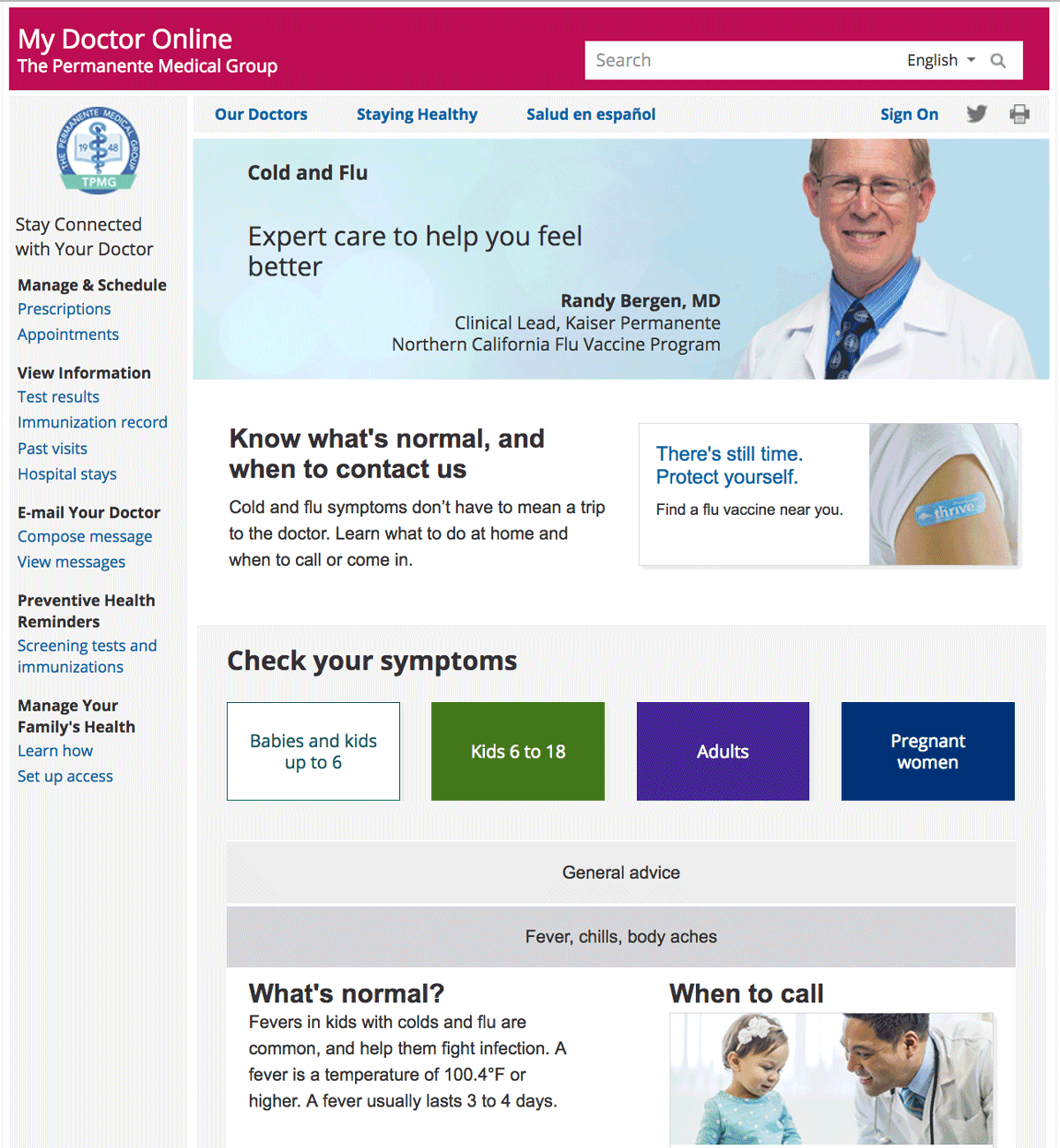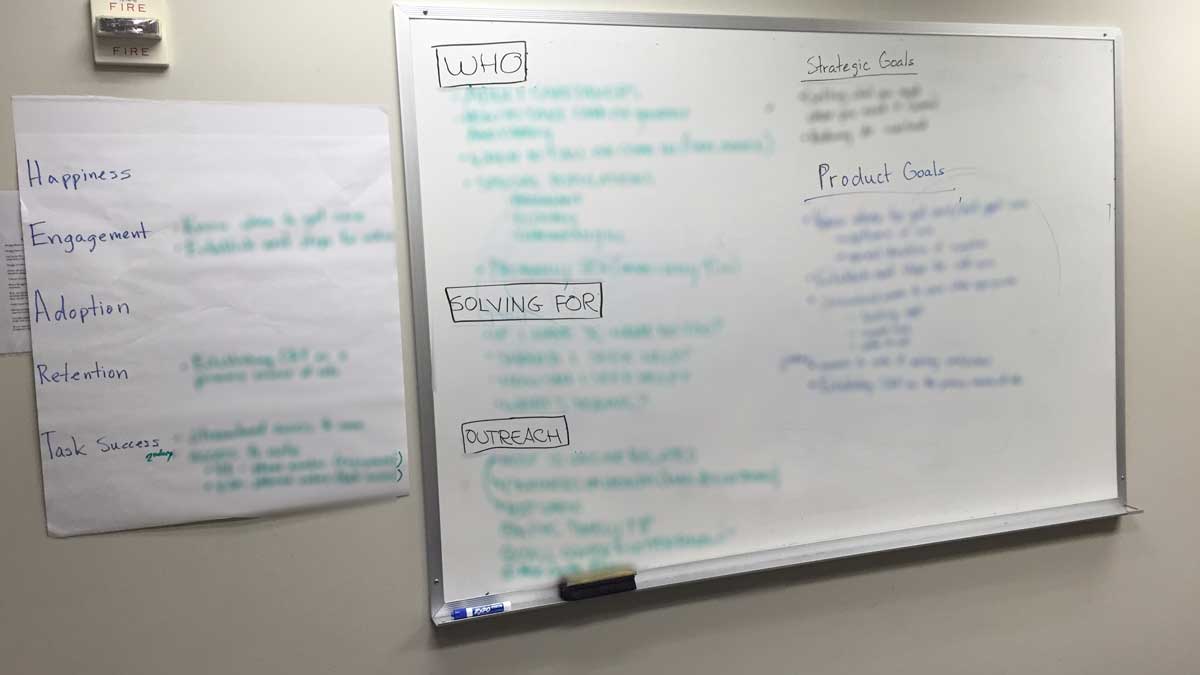Cold and Flu
Methods: Participatory Design Workshop
The “Cold and Flu” section of My Doctor Online is intended to help patients get a flu vaccination and guide patients on self-care of their cold or flu. We intended to increase the number of vaccinations and reduce the number of patients who seek medical care for symptoms that do not require clinical involvement.

At a Glance
Project Team
- My Role: Research Lead
- Business Analyst
- Regional Health Education Subject Matter Experts
Goal of Project
- Gain an understanding of what kind of medical information patients seek when they have a cold or flu.
- Understand how patients manage varying severity levels of symptoms and how they decide to seek medical care.
Outcomes
- A key factor in decreasing doctor workloads during the 2016 flu season.
- 80%+ of patients who visited the vaccination page found out where to get a flu vaccination.
- Low bounce rate of 20% on the cold and flu symptoms section of the website.
Determining Research Scope
The “Cold & Flu” portion of My Doctor Online was being redesigned from scratch. In collaboration with the business analyst, we created a design-thinking session that would help us understand the business/clinical impact the product was supposed to have. From there, I was able to lead the workshop gathering knowledge gaps and hypotheses about who would use this product.

Developing Study Approach
We were given about a week and a half to put execute the research. We opted to run a participatory design workshops for patients, which allowed us to gather some level of individual feedback while taking advantage of a group setting to save time. We recruited patients who had recently been ill with either the cold or flu. We also made sure to include parents who could both theirs and their children’s needs.
1st Method: Storyboards Participants created storyboards based on their recent experiences of being sick. The storyboards helped participants think of the sequence of events, emotions, actions, problems, and solutions from when they had the cold or flu.
2nd Method: Knowledge Hunt Patients were given a chart with three severity levels (low, medium, high) for cold and flu symptoms. Patients chose which most closely represented their previous experience with the cold and flu. They then documented what symptoms defined that severity level and what actions they took based on those symptoms. Afterwards they would fill the two other remaining severity levels with a “hypothetical” illness.



3rd Method: Group Sharing A group discussion was used to gain a better understanding of patients storyboards and their charts. We were able to better understand the variety of behaviors and the rationale behind their decisions. This also helped us come up with some preliminary personas that were used to inform our product teams.
Key Research Findings
Finding 1 Patients go online for Cold and Flu info when their home remedies aren’t working and the illness begins affecting their daily routines. They go online to get understand whether the symptoms are normal, especially when it involves babies and toddlers.
“Reassurance that this is normal, and that it will pass. What to do if this doesn’t pass. Things to look for. Set my expectations” - Participant
Finding 2 Patients would rather not call or come in to see a doctor but may feel obligated to do so if their concerns aren’t addressed through their own research.
Finding 3 Patients had a wide ranging ideas as to what symptoms were “clinically urgent” symptoms and did not feel they had enough transparency from KP about when they should reach out.
Results
- Informed the overall content approach to address patient needs.
- Help patients understand the clinical guidelines for when to seek care.
- Approach symptoms in a way that would immediately relieve patients of any concerns about symptoms, and provide immediate access to contact information for those who don’t fit into “normal” symptoms.
- A key component in decreasing doctor workloads during the flu season.
- 96% of patients who visit the site view information about where to get a flu vaccination.
- Low bounce rate of 20% on the symptoms section of the website.
Learning Lessons
The participatory design methods used didn’t give us an easy way for team members to observe remotely. This created a larger reliance on presented information vs. first-hand observations, which dilutes team’s understanding of the subject matter. However with the constraints we had, we were able to gather useful information for the product team and guide them on a path to a successful product.